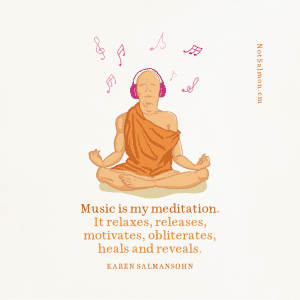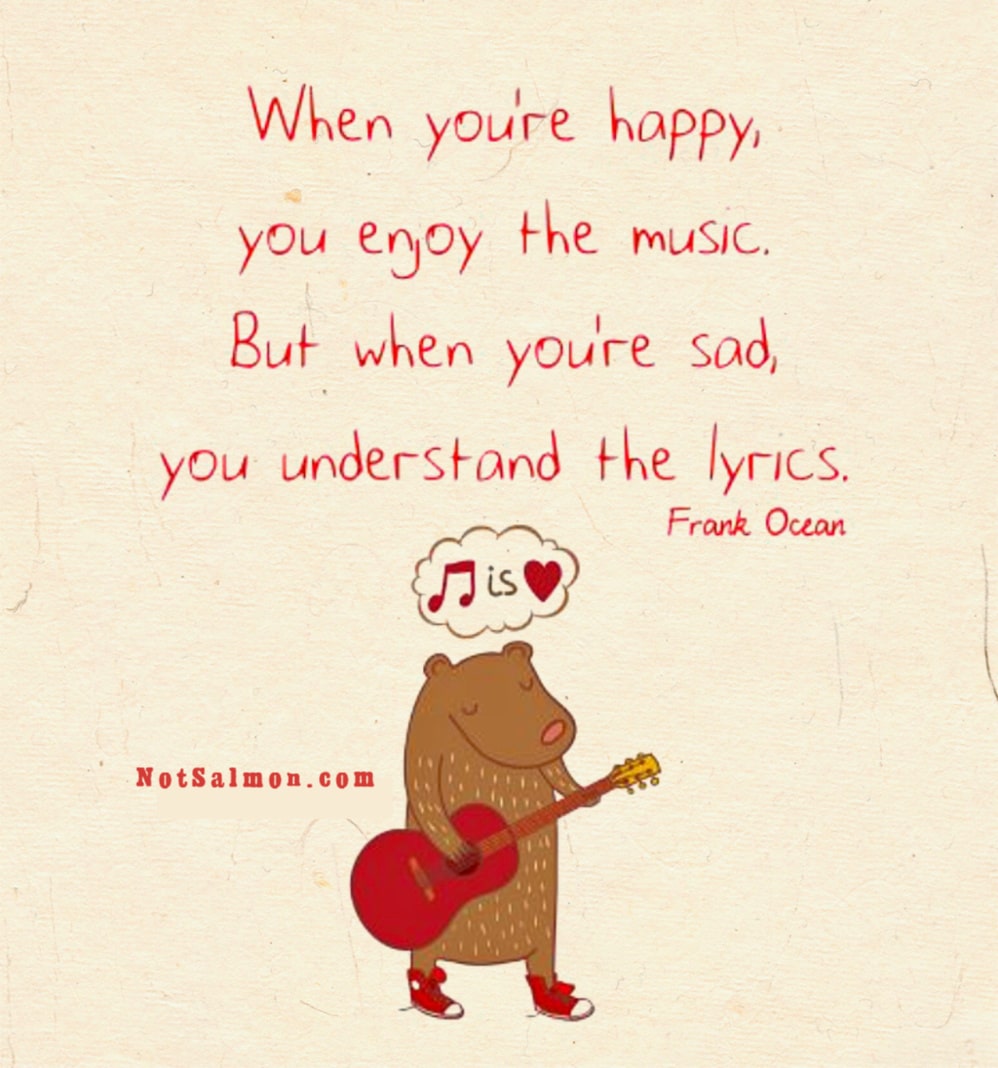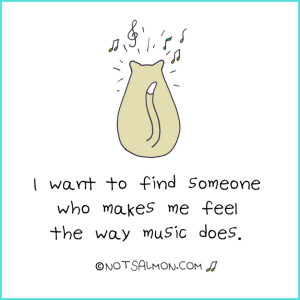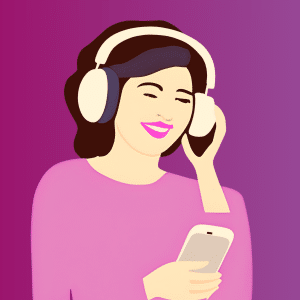 Learn about the power of music in health and recovery – with real-life stories, scientific research, and practical healing musical tips for you to use.
Learn about the power of music in health and recovery – with real-life stories, scientific research, and practical healing musical tips for you to use.
You ever find yourself deep in the trenches of YouTube, where one video leads to another, and before you know it, you’re three hours in? That happened to me recently.
Only instead of spiraling into a cat video vortex, I stumbled upon this incredible story about the power of music when it comes to healing and recovery.
The video featured this guy in a coma. Nothing seemed to be reaching him. And then his wife played him the song: “I Can’t Get No Satisfaction.” Yes, the Stones. Guess what? He was jolted awake.
When the doctor later asked this man what he remembered from the coma, he spoke of the song. He described it as an “energy booster” that nudged him back to consciousness.
Wild, isn’t it? I know playing music in the morning can energize me to wake up! But I had no idea that music was so incredibly energizing that it could rouse someone from a coma.
This true story got me thinking about the incredible power of music.
As you might already know, I’m a Master Mindset Coach, and a bestselling personal development author with about 2 million books sold globally.
I love researching studies and techniques to help people live their healthiest and happiest lives. So, I dove headfirst into research about music as medicine – and how it helps people in healing and recovery. Boy, did I find some fascinating stuff about the healing power of music.
4 More True Stories About the Healing Power of Music
Music has always been a way for us to express our deepest emotions, our highest hopes, our darkest fears. But it’s more than that. For some people, music is a lifeline.
1. Waking Up to the Tune of Madagascar
Back in 2015, over in Utah, there was a seven-year-old kid named Leland Shoemake who was stuck in a coma. His parents were scared and desperate to reach him, so they tried something out of the box. They played his favorite song, the theme tune from the movie “Madagascar.” It worked. Leland began to stir and eventually, he woke up from his coma.
2. A Father’s Song for His Daughter
Next up is a true story from Nashville, home of country music. You’ve probably heard of Mel Tillis, a star in the country scene known for his distinct stutter that amazingly disappeared when he sang. In the 1990s, Mel’s daughter, Pam Tillis, also a country music artist, found herself in a coma after a car accident. Mel sang to Pam while she was in the hospital. She started to stir and eventually came out of the coma.
3. Music as A Memory Jolt
Lastly, let’s talk about the often unforgiving disease of dementia. This story is about an elderly man named Henry, who was featured in a documentary called “Alive Inside.” Henry was mostly unresponsive, a shell of his former self due to advanced dementia. But when a nurse put headphones on Henry, playing his favorite music from his younger days, something incredible happened. He lit up, began to move, and even started reminiscing about his past with great joy and clarity. It was as if the music had reached back through the fog of dementia and brought a piece of Henry back to the present.
Music Therapy: Music as Medicine
Now I want to explore the hit charts of music therapy – all the ways it’s being applied as a kind of sonic medicine.
1. Music Helps Pain Management
Did you know that music can actually help us handle pain? It’s true. The next time you stub your toe, try putting on your favorite tune. Some studies have shown that music can reduce perceived intensity of pain, especially in chronic pain conditions. Whether it’s the distraction, the positive emotions, or some other magic, it seems music can turn the volume down on discomfort.
2. Music Aids Recovery and Physical Rehabilitation
Music therapy has also been making waves in the field of physical rehabilitation. For example, rhythmic auditory stimulation – a technique where patients move to the beat of the music – has shown promise in improving gait and arm movements in stroke patients. It seems the the power of music in recovery is huge. It can help the brain ‘relearn’ movement patterns.
3. Music Improves Mental Health
 I’m sure you’ve had those days where music was your best therapy. Well, there’s a science to that. Music therapy is increasingly being used in mental health treatment for conditions like depression, anxiety, and PTSD. The act of creating music can help people express themselves and explore their feelings in a safe and therapeutic way.
I’m sure you’ve had those days where music was your best therapy. Well, there’s a science to that. Music therapy is increasingly being used in mental health treatment for conditions like depression, anxiety, and PTSD. The act of creating music can help people express themselves and explore their feelings in a safe and therapeutic way.
4. Music Soothes Symptoms of Neurological Disorders
We’ve already touched on dementia, but the benefits extend to other conditions like Parkinson’s disease and autism. For instance, music therapy has shown positive effects in managing symptoms of Parkinson’s, such as improving motor control and emotional functions. And in autism therapy, music can help improve social skills and communication.
Beats of the Brain: How Music Influences Our Cognitive Functions
Now I want to explore the science behind music’s power on our healing and recovery – or more specifically, the neuroscience. Let’s move the focus of this article to our brains and answer the following…
- Why does our grey matter react to music in such profound ways?
- How does a mere combination of notes manage to wake up a person from a coma, kickstart memory, or even alleviate physical pain?
1. Music: The Universal Language of the Brain
Why are our brains such fans of music? Well, when we listen to music, it doesn’t just go in one ear and out the other. Music creates a full-blown fiesta in our brains. Various regions light up, working in perfect harmony (pun totally intended). We’re talking about areas responsible for processing sound, controlling movement, managing emotions, and more. Essentially, music is a language that every part of our brain understands and responds to.
2. A Symphony of Neurotransmitters
Music doesn’t just get our neurons firing. It also activates our neurotransmitters – those little chemical messengers in our brain. Remember dopamine, that feel-good superstar of our brain’s reward system? When we listen to music, our brains release dopamine, leading to feelings of pleasure and happiness. In fact, some researchers compare the dopamine rush to eating a delicious meal or even experiencing a romantic crush!
3. Boosting Our Brains With Beats
Research has also shown that music has a positive impact on various cognitive functions. We’re talking about stuff like attention, memory, and executive functions – which basically means skills that help us get things done. These effects are why you might find it easier to work while listening to instrumental music or why that catchy song from the 90s is still lodged in your memory.
4. The Healing Power of Rhythm
So, we’ve established that music affects our brains in amazing ways, but how does it heal? This part of the puzzle is still under investigation, but one theory revolves around the concept of entrainment – the brain’s natural tendency to sync up with rhythmic stimuli like a musical beat. This rhythmic synchronization might help to regulate brainwaves, potentially promoting healing and recovery in damaged or disease-affected areas.
6 Tips to Use The Power of Music to Heal, Energize and Recover
 Now, let’s shift gears and explore how you can harness the healing power of music in your daily life.
Now, let’s shift gears and explore how you can harness the healing power of music in your daily life.
Grab your earbuds and put your favorite playlist on standby!
Here come six research-backed ways to use music for healing, energy, and recovery.
Tip 1: Create a Healing Playlist
According to a study published in the “Journal of Music Therapy,” listening to your preferred music has been shown to be especially beneficial at decreasing pain, reducing stress and anxiety, and increasing feelings of control.
So with this in mind, this tip is inspired by the “Playlist for Life” – a UK-based initiative that offers a novel approach to reconnecting dementia patients with their identities and memories. The idea is pretty simple, yet powerful: Families are encouraged to create personalized music playlists – using tunes from the “soundtrack of a person’s life” – and to use this music to trigger personal memories and emotions that might have been forgotten.
Well, I think we all should create a “Playlist for Life” – a personalized healing playlist – which we have on hand as a powerful therapeutic tool. Make this your go-to playlist when you need a pick-me-up or calming moment. Take some time today to curate your “musical time capsule.” Pick songs that resonate with you emotionally, ones that bring back good memories or make you feel calm and happy.
Tip 2: Match Music to Your Mood
 Believe it or not, matching your music to your mood can actually help you process your emotions. A study in “Frontiers in Psychology” found that ‘mood-congruent’ music, or music that reflects your current emotional state, can help you accept and better understand your feelings.
Believe it or not, matching your music to your mood can actually help you process your emotions. A study in “Frontiers in Psychology” found that ‘mood-congruent’ music, or music that reflects your current emotional state, can help you accept and better understand your feelings.
Feeling blue? It’s okay to listen to melancholy tunes. In a celebratory mood? Pop on some upbeat tracks.
Tip 3: Use Music to Boost Your Workout
Music isn’t just good for your mental health; it can help your physical health too.
A study in the “Journal of Sport and Exercise Psychology” revealed that music can enhance your workout performance by increasing your endurance and creating a more positive exercise experience.
Whether it’s upbeat pop for cardio, or soothing classical music for yoga, finding the right tunes can make your workout feel less like a chore.
Tip 4: Engage in Active Listening
Active listening means fully immersing yourself in the music, paying attention to the lyrics, the instruments, the rhythm. It’s almost meditative. According to a study in the “Journal of Advanced Nursing,” active listening can decrease stress and anxiety levels. So try setting aside some time each day to really listen to music, without any distractions.
Tip 5: Explore Music-Making
You don’t have to be a maestro to make music. Engaging in music creation, whether it’s singing, playing an instrument, or even tapping a rhythm on your kitchen table, can have therapeutic effects. A study published in the “British Journal of Psychiatry” found that music-making can reduce symptoms of anxiety and depression. So let your inner musician out to play.
Tip 6: Incorporate Music into Your Bedtime Routine
Having trouble catching some Z’s? Music might be your new best friend. According to research published in the “Cochrane Database of Systematic Reviews,” listening to calming music before bed can improve sleep quality. So consider adding relaxing tunes to your bedtime routine. Just remember to choose slow tempo music and avoid catchy tunes that might get stuck in your head!
In Conclusion: The Power of Musical Healing
It’s clear that musical healing is a research-backed phenomenon. We’ve seen how music reaches into the silent world of a coma patient and stirs something deep within. Plus we’ve seen how music therapy is used as an innovative form of medicine, aiding mental health, alleviating physical pain, empowering dementia patients, and easing the challenges of physical recovery.
Music is not just entertainment. It’s a tool, a friend, a Master Mind Coach a stimulant, and a soothing balm.
So, next time you reach for your headphones or hum along to a familiar tune, remember that you’re not just enjoying a catchy beat. You’re engaging with an ancient, universal force – one that can bring comfort, inspire joy, and contribute to your overall health and well being.
Tweak Your Way To Your Best Life
If you’re struggling to get started with making small needed changes in your life, consider enrolling in my online program Tweak A Week. This course is designed to make it fun and easy to add in new small tweaks to your habits each week.
P.S. Before you zip off to your next Internet pit stop, check out these 2 game changers below - that could dramatically upscale your life.
1. Check Out My Book On Enjoying A Well-Lived Life: It’s called "Your To Die For Life: How to Maximize Joy and Minimize Regret Before Your Time Runs Out." Think of it as your life’s manual to cranking up the volume on joy, meaning, and connection. Learn more here.
2. Life Review Therapy - What if you could get a clear picture of where you are versus where you want to be, and find out exactly why you’re not there yet? That’s what Life Review Therapy is all about.. If you’re serious about transforming your life, let’s talk. Learn more HERE.
Think happier. Think calmer.
Think about subscribing for free weekly tools here.
No SPAM, ever! Read the Privacy Policy for more information.
One last step!
Please go to your inbox and click the confirmation link we just emailed you so you can start to get your free weekly NotSalmon Happiness Tools! Plus, you’ll immediately receive a chunklette of Karen’s bestselling Bounce Back Book!


 Learn about the power of music in health and recovery – with real-life stories, scientific research, and practical healing musical tips for you to use.
Learn about the power of music in health and recovery – with real-life stories, scientific research, and practical healing musical tips for you to use. I’m sure you’ve had those days where
I’m sure you’ve had those days where  Now, let’s shift gears and explore how you can harness the healing power of music in your daily life.
Now, let’s shift gears and explore how you can harness the healing power of music in your daily life. Believe it or not, matching your music to your mood can actually help you process your emotions. A study in “Frontiers in Psychology” found that ‘mood-congruent’ music, or music that reflects your current emotional state, can help you accept and better understand your feelings.
Believe it or not, matching your music to your mood can actually help you process your emotions. A study in “Frontiers in Psychology” found that ‘mood-congruent’ music, or music that reflects your current emotional state, can help you accept and better understand your feelings.